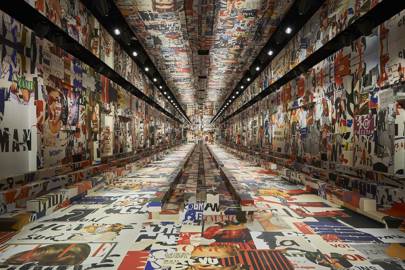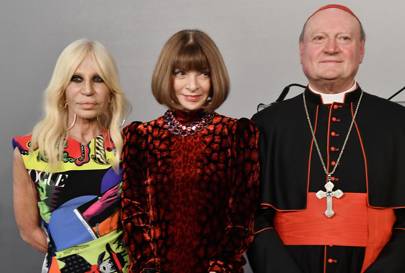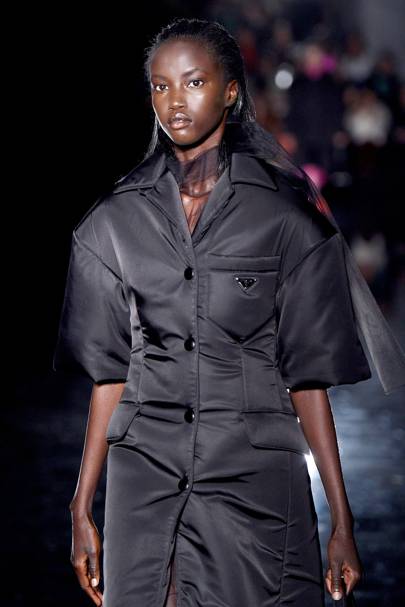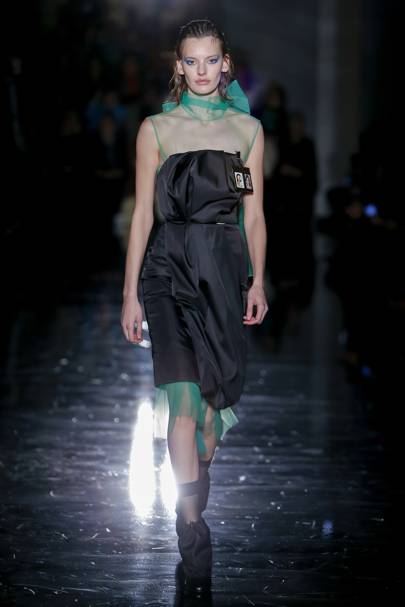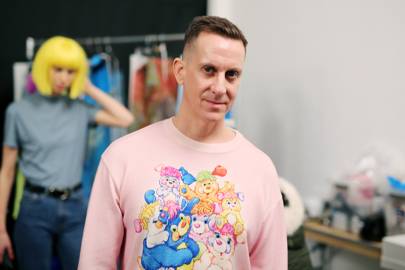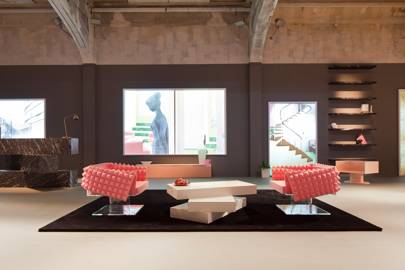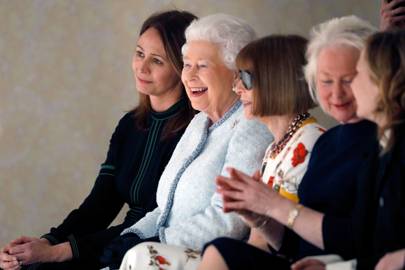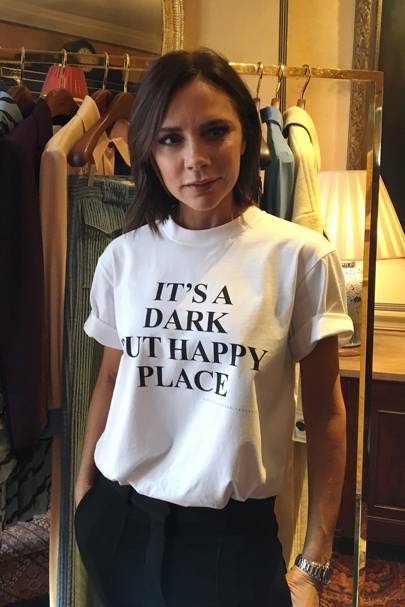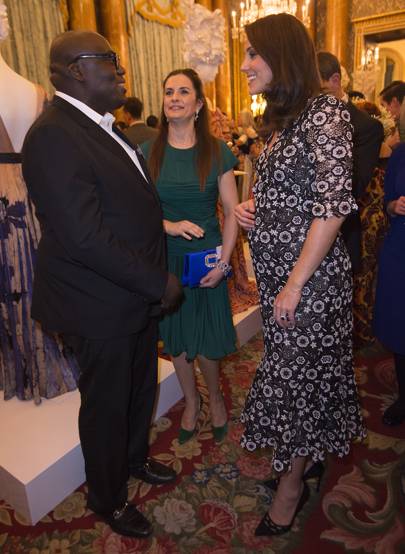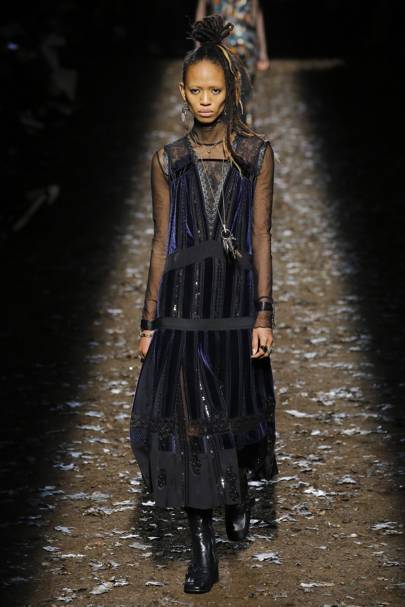If Paris is the fashion world's current hotbed of design talent, Polly-Pocket-sized designer
Marine Serre is the name to drop. The
Balenciaga alumnus has garnered a cult following on account of her athletic, form-fitting silhouettes fused with eclectic prints - not to mention accolades in the form of the prestigious
LVMH Prize. Beating 1,200 contestants to take the top award in 2017, the judges' decision was unanimous, as panel member
Nicolas Ghesquière told Vogue at the time: "It was the way she represents dressing today: the sports clothes, the body consciousness, and a kind of romanticism and femininity. It really speaks of [this] generation."
We caught up with the French designer ahead of her
Paris Fashion Weekcatwalk debut, as she shared with us an exclusive portfolio of images photographed in Beirut by her friend, Tanguy Poujol.
So, you're about to do your first catwalk show - how do you feel?
It's very exciting. At this point I feel proud of my team, my friends and all of the people that have helped us. I'm also very proud that I am slowly starting to manage this fashion storm and filter all the madness that surrounds it. I'm still only a 26-year-old woman, you know!
Can you tell us a little bit about your references for the autumn/winter 2018 collection?I will keep most of it secretive and mysterious for now. What I can say is that my challenge has been to remain as radical as possible. The new collection will be floating between very hard and very sensible, really trying to make styles that respond to the world we are living in today, in the image of what we think people actually live and feel and need nowadays. A lot of my energy has been spent to try to find new ways to produce. This is very difficult, and takes time, but I really think it is one of the major real things in fashion today, and I think we can make some funny things work with AW18. We continue from our four cornerstones: hybrid garments with many contrasting references, playing with time, the crescent moon, and what you could call a political edge. I also continued with my favourite fabrics such as moire and jersey, like before.
So much has changed for you in the past year - personally and professionally.
Well, the short story is that before 2017, there was barely a brand at all! The first thing that happened was the selection of my "Radical Call for Love" collection for the Hyères Prize, and then for the LVMH Prize. Then came the fashion week in March, with the first international buyers contacting me so they could look at my garments in my tiny apartment. To my surprise they bought the entire collection, and this really marked the start of everything.
Why DSM Has The Ultimate Pull For Designers?From there I set up my first production, while my boyfriend did the liaison with the retailers - both in the evening hours, on top of our day jobs - before getting selected for the next round of the LVMH Prize, and for the ANDAM Prize too a few weeks later. I went to Hyères with my sister, who also kept helping us during the summer. A few weeks later, again, fully in the middle of our first production, we won the LVMH. Naturally, the ANDAM Prize cancelled afterwards, but from that moment on, with buyers including Dover Street Market, SSENSE, and the LVMH Prize win, I knew that I needed to get ready for things to change.
We took on our first interns and assistants and focused first on finishing production. Then, we moved to a slightly bigger apartment to be able to design a small follow-up collection for SS18, called "Cornerstones". It was very hard, as I was still working under contract at Balenciaga until the show in September. Afterwards, we sold "Cornerstones", moved to a proper studio, and started working toward a new autumn collection.
What did you learn from your time at Balenciaga?
I started working there in October 2016 after graduation and left when my contract ended a year later. For most of the time that I was there, I was also going through all the above… so things were incredibly intense. I had a good time there, and I think we made some great things. The key experience for me was to see how the fashion machinery really works from the inside, today, in the big houses. I must add however: I also learned a lot from internships at Alexander McQueen, Dior and Maison Martin Margiela as a student.
How did winning the LVMH prize change your business? You've mentioned before how it allowed you to start paying people properly.
We had already started working with some major retailers, but with the network, prize money and visibility that came with winning the LVMH Prize, it was possible for us to really take things to whole new level. The great thing about winning the prize is that we have the freedom to do whatever we want, and are not reliant at all on investors or banks. LVMH leaves us very free too. On the other hand, it is also difficult to deal with all the attention and the responsibility that comes with suddenly being ejected into the world as a brand, and as a 25-year-old, and to keep focussed on what it is actually all about: the garments.
As for the prize money… Most of it has been spent on the great people that are now working with me, and in the production of the spring collection. We have around 10 people working with us now, and the team is very young and, though it was not really planned that way, very feminine and international. So that makes things very special and gives us a great spirit. The rest of the money has enabled us to acquire a studio annexe showroom in Paris, in the second arrondissement, which is not cheap at all and very hard to find, and finally on developing the new collection for February. We will soon need our incoming profits!
What's your best-selling piece?
My crescent logo that has this huge sense of relevance and excitement about it that is hard to grasp precisely, but it is, I feel, undeniable. So, our bestselling pieces are our boots in either Belgian tan or white jersey, with our signature crescent moon print, alongside the cat-suit which is also in the moon print. Ariane Grande also wore our jumpsuit during her tour, so that sold very well too.
How do you want people to feel when they wear your clothes?
I want women to feel armoured and strong, ready for battle and survival, which we need to be today, but without giving up shape, colour and a sense of humour. The garments can envelop you and make you feel both feminine and tough and protected at the same time. The woman I'm dressing, in my mind, has a strong sense of herself, does not make compromises and is a fearless dresser - but is also simply feeling like a nice person.
Are you sick of people talking about millennials? Do you see yourself as a designer for young people, a new generationn?
Yes, I'm not really in favour of dividing up over generations. There are plenty of young girls like myself that I really like, but also a lot that I don't want to speak for. There are also plenty of old and deceased people that I feel really close to. I see myself as a designer for all those who have a sense of engagement and style, whether that person is 15 or 50.



